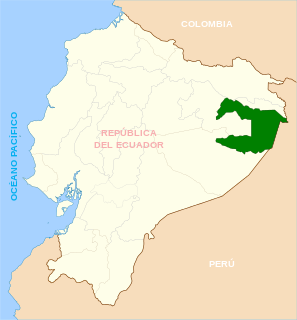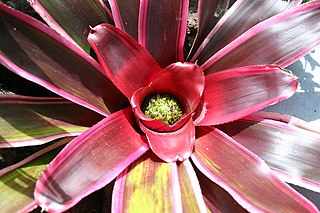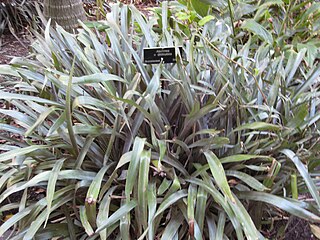
Yasuni National Park is in Ecuador with an area of 9,823 km2 between the Napo and Curaray Rivers in Napo, Pastaza, and Orellana Provinces in Amazonian Ecuador. The national park lies within the Napo moist forests ecoregion and is primarily rain forest. The park is about 250 km from Quito and was designated a UNESCO Biosphere Reserve in 1989. It is within the claimed ancestral territory of the Huaorani indigenous people. Yasuni is also home to two uncontacted indigenous tribes, the Tagaeri and the Taromenane. Many indigenous people use the riverways within the park as a main mode of travel. Several waterways in the area are tributaries that lead into the Amazon River, including blackwater rivers high in tannins boasting vastly different floral composition than the main riverways. The spine-covered palm, Bactrisriparia, and aquatic plant Montrichardia linifera typically line the edges of these slow moving rivers, often referred to as Igapós.

Neoregelia is a genus of epiphytic flowering plants in the family Bromeliaceae, subfamily Bromelioideae, native to South American rainforests. The genus name is for Eduard August von Regel, Director of St. Petersburg Botanic Gardens in Russia (1875–1892).

Ronnbergia aciculosa is a species of flowering plant in the family Bromeliaceae, native to Colombia and Ecuador. It was first described in 1904 as Aechmea aciculosa.
Aechmea colombiana is a plant species in the genus Aechmea. This species is native to Colombia and Ecuador.
Aechmea corymbosa is a plant species in the genus Aechmea. This species is native to Venezuela, Colombia, Peru, Brazil and Ecuador.
Ronnbergia involucrata is a species of flowering plant in the family Bromeliaceae, endemic to Ecuador. It was first described in 1888 as Aechmea involucrata.
Aechmea streptocalycoides is a species of flowering plant in the genus Aechmea. This species is native to Peru and Ecuador.
Aechmea williamsii is a species of flowering plant in the genus Aechmea. This species is native to Ecuador, Colombia, Peru, and northern Brazil.
Bromelia scarlatina is a plant species in the genus Bromelia. This species is native to Ecuador.
Guzmania acuminata is a plant species in the genus Guzmania. This species is native to Ecuador and Colombia.
Guzmania amplectens is a plant species in the genus Guzmania. This species is native to Colombia and Ecuador.
Guzmania bracteosa is a plant species of flowering plant in the Bromeliaceae family. It is endemic to Ecuador.
Guzmania globosa is a plant species in the genus Guzmania. This species is native to Ecuador, Colombia, and Peru.
Neoregelia mooreana is a plant species in the genus Neoregelia. This species is native to Ecuador.
Neoregelia myrmecophila is a plant species in the genus Neoregelia. This species is native to Venezuela and Ecuador.
Neoregelia stolonifera is a plant species in the genus Neoregelia. This species is native to Venezuela and Ecuador.
Josemania truncata is a species of flowering plant in the family Bromeliaceae, native to Colombia and Ecuador. It was first described by Lyman Bradford Smith in 1954 as Tillandsia truncata. Plants of the World Online sinks the genus Josemania into Cipuropsis, treating this species as Cipuropsis truncata.

Puya clava-herculis is a species of plants in the genus Puya. This species is native to Ecuador.
Tillandsia secunda is a species of flowering plant in the genus Tillandsia. This species is native to Ecuador.




